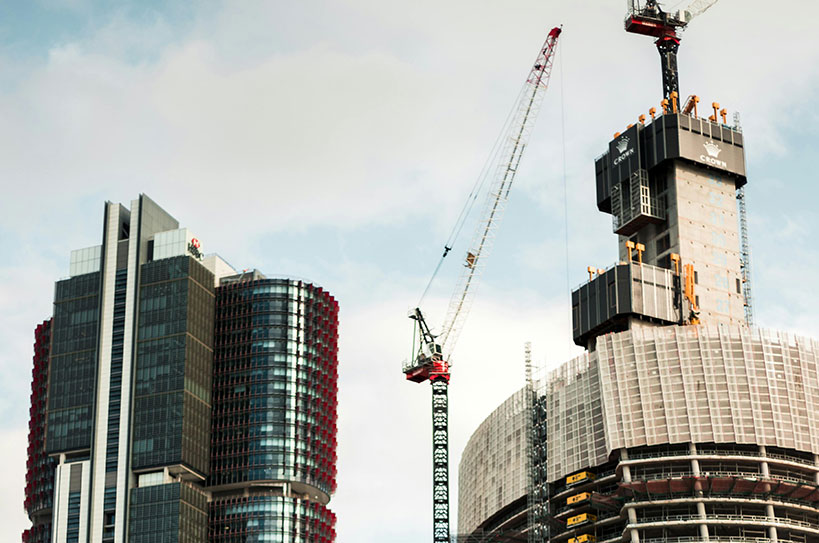Every year, the United States Department of Labor (DOL) gathers statistics to learn how many workers are being hurt on the job, including those harmed by construction workplace injuries. Based on 2021 statistics from the Bureau of Labor Statistics (BLS) — a branch of the DOL — nearly one in five workplace deaths occurred in the construction industry.
Over one-third of construction industry deaths occurred due to falls, slips, or trips. This is one of the four types of accidents dubbed the “Fatal Four” by OSHA. The other three are electrocutions, being struck by falling objects, and getting caught in between machinery parts and other objects. The construction industry accounted for 46% of all fatal falls, slips, and trips in 2021.
This data indicates that employers and construction site managers must continue to improve their protection of all workers from serious injuries. It’s estimated that about 500 workers’ lives could be saved yearly if the annual number of “Fatal Four” injuries were reduced.
This blog discusses the Fatal Four accidents and how to avoid them. If you or a loved one has suffered a workplace injury, contact our work injury lawyer now at Terry Bryant Accident & Injury Law at (713) 973-8888 or toll-free 1 (800) 444-5000. We will assess your claim’s strengths and weaknesses and guide you on how to seek compensation.
Why hire our workplace injury attorneys to represent you?
When injured at the workplace, you might be away from work for a long time or be unable to return to the position you had. Undoubtedly, this will affect your income and general well-being. We understand this at Terry Bryant Accident & Injury Law, so we dedicate our resources and utilize our skills and knowledge to help you seek maximum compensation.
Our attorneys have gone against big construction companies in Texas and are unafraid to advocate for our clients. With our attorneys representing you, your rights and interests will always be protected, and you stand a better chance of a favorable outcome. Contact us immediately after a work injury so we can help you fight for your rights.
We understand how Texas laws affect work injury cases and how the legal system operates, so you can count on our experienced legal team.
What you should know about the Fatal Four accidents in the construction industry and how to avoid them
According to the Texas Department of Insurance (TDI), the BLS reported 5,190 fatal work injuries in 2021, and 20% of those deaths happened in the construction industry. Below, we discuss the accidents termed “the Fatal Four” and ways to avoid them.
Falls, slips, and trips
Falling, slipping, and tripping are common on construction sites. Most sites have holes in the floors during construction and are strewn with equipment and debris, causing slips and trips. The accidents can be especially dangerous if workers fall from great heights and are not wearing the proper safety equipment. According to OSHA standards, workers six feet above the ground must wear protective gear when working. In 2021, falls caused 37% of construction deaths, but these accidents can be avoided.
Electrocutions
Many wires and electrical gadgets are on construction sites, and exposure can lead to electrocution. In 2021, electrocution accounted for about 8% of construction worker deaths. The electrocution risks on construction sites include exposed wiring and wet conditions near outlets, contact with overhead power lines, energized conductors or circuit parts, poorly maintained power tools and cords, and lightning strikes. Strictly following OSHA electrical standards, like grounding or double-insulating all electrical equipment, can prevent these accidents.
Preventing the Fatal Four involves following the safety guidelines listed by OSHA and educating employees on the dangers of ignoring safety tips and equipment.
Struck by an object
With so much activity occurring on construction sites, workers often get struck by objects. These objects can include falling equipment, tools, debris, job site materials, and sometimes another employee. Struck-by-object accidents occur when employers and workers fail to maintain an orderly job site.
In 2021, 8% of construction deaths were due to workers’ being struck by swinging, falling, or misplaced objects. These included falling objects due to rigging failure, loose or shifting materials, equipment malfunctions, and vehicle or equipment strikes. Workers should be aware of all possible hazards, including dropped tools and flying objects. It’s important construction site workers follow these safety tips:
- Wear head protection to shield themselves from cuts, burns, bruises, traumatic brain injuries, (TBIs) and death
- Tether their tools to their work belts to prevent them from falling on other workers below
- Stay alert in work zones, obey signs and signals, and never stray into open traffic
- Plan for a safe crane and lift zone, avoiding areas with suspended loads.
Caught in or between objects
Caught in or between objects refers to accidents where workers are squeezed by two objects, causing them to get crushed. About 5% of construction worker deaths in 2021 were from employees getting caught in or between machines, devices, tools, or trenches, including workers caught between moving or rotating equipment or collapsing structures or materials.
Employers must ensure that control measures are in place and workers are trained to prevent the most common caught-in and caught-between hazards, including getting pulled into unguarded machinery, getting caught between equipment and a fixed object, or trapped in a masonry wall, trench, or excavation collapse.
Did you suffer a work injury? Get a free consultation right now!
If you or a loved one suffered a work injury, we can help you start the compensation process. Our attorneys at Terry Bryant Accident & Injury Law work on a contingency fee basis, so you don’t have to worry about any upfront fees. Call us now at (713) 973-8888 for your free case review.
Attorney Terry Bryant
 Terry Bryant is Board Certified in personal injury trial law, which means his extensive knowledge of the law has been recognized by the Texas Board of Legal Specialization, setting him apart from many other injury attorneys. The 22 years he spent as a Municipal Judge, Spring Valley Village, TX also provides him keen insight into the Texas court system. That experience also helps shape his perspective on personal injury cases and how they might resolve. This unique insight benefits his clients. [ Attorney Bio ]
Terry Bryant is Board Certified in personal injury trial law, which means his extensive knowledge of the law has been recognized by the Texas Board of Legal Specialization, setting him apart from many other injury attorneys. The 22 years he spent as a Municipal Judge, Spring Valley Village, TX also provides him keen insight into the Texas court system. That experience also helps shape his perspective on personal injury cases and how they might resolve. This unique insight benefits his clients. [ Attorney Bio ]


 Terry Bryant is Board Certified in personal injury trial law, which means his extensive knowledge of the law has been recognized by the Texas Board of Legal Specialization, setting him apart from many other injury attorneys. The 22 years he spent as a Municipal Judge, Spring Valley Village, TX also provides him keen insight into the Texas court system. That experience also helps shape his perspective on personal injury cases and how they might resolve. This unique insight benefits his clients. [
Terry Bryant is Board Certified in personal injury trial law, which means his extensive knowledge of the law has been recognized by the Texas Board of Legal Specialization, setting him apart from many other injury attorneys. The 22 years he spent as a Municipal Judge, Spring Valley Village, TX also provides him keen insight into the Texas court system. That experience also helps shape his perspective on personal injury cases and how they might resolve. This unique insight benefits his clients. [ 

